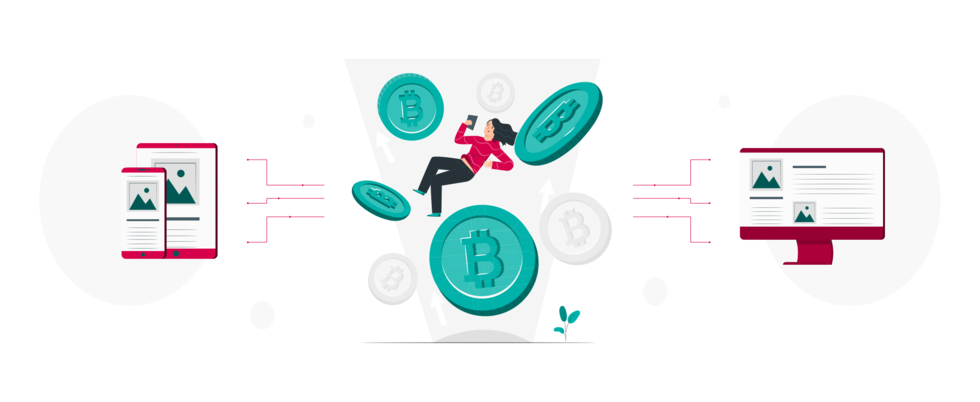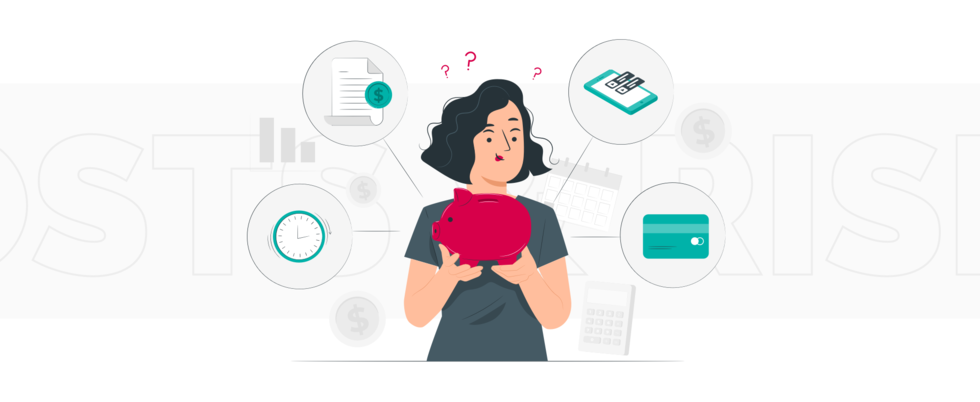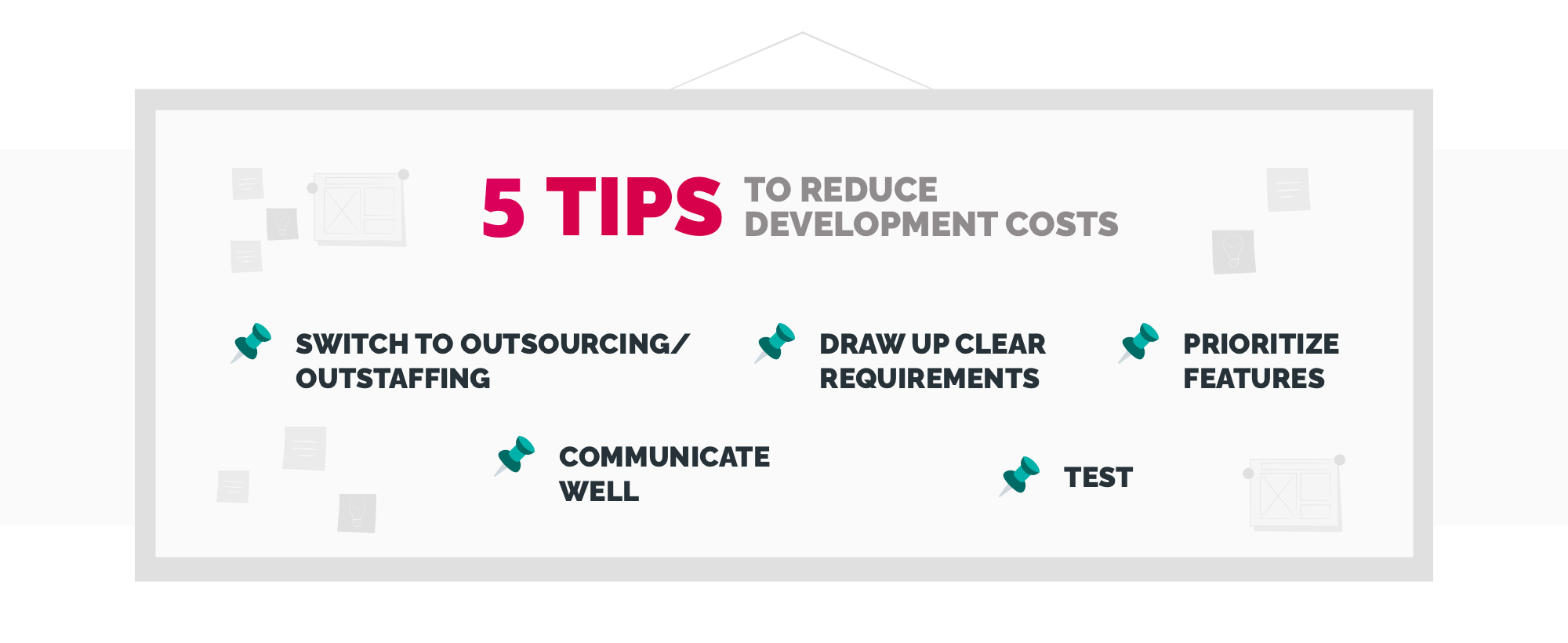Top 5 Risks During Product Cost Estimation And How To Avoid Them

Lead Business Analyst at TechMagic, with a background in Project Management and QA, mentor, and speaker. Passionate about Business Analysis and Product Design.

Product development cost estimation is challenging as it's followed by many risks. In this article, we describe in detail how to avoid them.
Thorough cost estimation helps you evaluate your capabilities, plan the product development process step by step, and predict potential risks to avoid most of them. In this article, we develop your understanding of this process, define the principal risks, go through the most effective ways to prevent them, and detail how to estimate product development costs.
- Cost and risk in software projects
- How to create a budget for your custom software project to avoid risks
- Tips to reduce development costs
- Final thoughts
The main goal of cost estimation is to give you a clear understanding of how much money you’ll need to deliver and bring your product to market and help you manage your budget.
It also prepares you for unforeseen risks that usually arise out of the blue. If they’re not solved at the very beginning, they can turn into an avalanche. A financial pillow for these situations allows you to solve them without losing your time, money, and motivation. Accurate cost estimation for product development is critical for staying within budget and enjoying greater freedom of movement. If an estimate isn't accurate enough, a business could end up with a piece of software that can't pay for itself or remains completely unfinished.
The best decision for every business will be to hire a professional team of software architects and business analysts for the project discovery phase, the first step. While the architects will work on the prototype of your future app, the analysts will provide you with an accurate and detailed cost estimate and all documentation needed to start work.
Costs and risks in software projects

The software development process is related to many risks. Here we highlight the most common and critical ones, which can harm the budget and lead to unforeseen spendings.
Having a proper risk management model will help you convince investors that you're in it for the long run and are prepared to minimize the chance of failure.
Schedule risk
The most common risks are those related to timing. Insufficient time planning may not be obvious right away, but it always makes itself felt as time goes by. Suppose there is no precise coincidence between the estimated and actual time frames. In that case, your project has all chances to be cancelled or held, more or less long-term.
The only reasonable outcome would be hiring extra specialists or outsourcing some tasks, which is not cheap, especially in an emergency. So you need to understand not just how to determine product development cost but also how to establish time-frames. These are two incredibly related factors.
The main mistakes that lead to schedule risks:
- Time for the entire project and its separate phases was initially estimated inaccurately;
- Priorities and responsibilities were defined and divided inexactly;
- Time tracking question wasn’t discussed;
- The final features weren’t determined in terms of time;
- Unexpected expansion of the project scope.
How to avoid:
- Involve stakeholders and top management in the estimation process;
- Anticipate the probability of team extension and reserve costs for this;
- Reach a full agreement on the main and additional features of the product.
Budget risk
If the previous type of risk is the most common, this one is considered the most dangerous. Proper cost allocation is the basis for future success. It allows you to deliver your product and enter the market smoothly and as planned. When it comes to budget, you should literally calculate risks in the new product development.
Problems usually occur due to:
- Inaccurate initial budget calculation;
- Not including the probability of overspending or product scaling into an estimate and, consequently, not having a financial pillow for these cases;
- Counting on investments while not actually having them.
How to avoid:
- Maintain constant control on the budget;
- Do thorough research, collect all the information needed, and decide on the key and additional functionality before estimating the cost for its delivery;
- Calculate the costs of all changes and updates that might occur.
Technical risks
The innovation race is an exciting and extremely risky thing at the same time. All technologies have their lists of cons, but when it comes to something brand new and, accordingly, uninvestigated properly, you risk twice as much.
Technical risks are linked to:
- Lack of knowledge and experience with the particular technology;
- Constant changes in requirements;
- Inability to deliver all functionality with a chosen tech stack;
- Failure to use specific technology after the initial phase;
- Underestimated difficulties with module implementation.
How to avoid:
- Accurately define your tech stack;
- Think about the technologies, interchangeable with chosen ones;
- Consider flexible risk management;
- Plan the development scaling synchronically with a business scaling during cost estimation of new product development;
- Deliver an MVP first.
Staff & management risks
Situations of this sort are common for long-term projects, where the risk of fatigue and burnout is the most significant. It usually starts with inaccurate timing estimates, which leads to overworking. It’s being felt most severely closer when the release day comes closer. The inability to fit the timeframe means increasing the number of working hours or the team extension, which, in turn, means extra spendings.
On the other hand, startups face these situations too. It’s common when people start working with all their motivation, and then it wears off because the first results are delayed. It’s a task for a founder, CEO, or HR to keep morale and motivate employees, keeping them updated on all the little steps and wins, etc.
Productivity problems are usually related to:
- Poor project management;
- Wrong choice of methodology;
- Improper division of responsibilities.
How to avoid:
- Use Agile methodology for all stages from the very beginning;
- Find people with the right skills and expertise level;
- Estimate the entire project and its separate parts during the product design cost estimate;
- Recognize the importance of maintaining the level of developer involvement and work on it;
- Establish a motivational system.
External risks
External risks remain the most dangerous since the chance to predict them is close to zero. That is why it is critical to pay 100 per cent attention to the market analysis and competitors check to protect yourself from the risks associated with:
- Active market development;
- New competitors with more significant resources entering the market;
- Changing end-user behaviour;
- Government updates that may affect your business.
How to avoid:
- Entrust the market research to a qualified business analyst who will thoroughly research the market, notice its patterns and make sure they are favourable for the product and business model;
- Provide your BA team with access to all the actual and relevant data. It’ll help to stay informed about all the changes and updates and react immediately.
How to create a budget for your custom software project and avoid risks

Now we know what affects project development cost and how to estimate risks in the new product development. The next step is budget planning, and it, in turn, consists of a few primary steps. Let's find out.
Step 1: define requirements and scope of work
As the first step of the discovery phase in software development, we comprehensively study the future product, define and list all the essential and additional features. Among the questions to ask yourself: what value does it give to users? How will they use the app? What other services do you need to integrate to make the user experience more convenient and satisfying?
These are just drops in the ocean. Answer all the tiny questions related to your market, your product, and your buyer personas. Work out any possible option, and don't miss any detail, no matter how small. This approach will make the future estimate as accurate and transparent as possible.
Step 2: determine the type of your team
Start with the available resources. Do you have an established in-house team or not? Is there a sufficient quantity of needed experts in your team, or should you consider an augmentation?
Without a team, you can go for outsourcing. Outsourcing or hiring an in-house team ― knowing what suits you best allows you to draw a business model, plan future cooperation, and evaluate the financial side of this cooperation. Make a counting of risks in development and include a possibility of hiring extra people in your budget.
Step 3: explore market prices
As the next step, investigate the job market. The Internet gives you tons of information and statistics on the average rates and developers with different levels of expertise worldwide. Here we have the newest overviews for Germany, Finland, and Belgium, for example.
Developers' profiles on freelance platforms (Upwork, Freelancer.com, etc.) are also pretty informative since you can check expertise, portfolio, and feedback. The more data you collect, the more precise the preliminary calculation will be. Focus on the number and complexity of tasks, professional level, rate, feedback.
The portfolio calls for the most precise attention. But even after finding some relevant projects there, create an accurate test task so you can check whether this specialist can perform your exact task and in the way you’d like.
Step 4: create your budget
At this stage, when you know what the cost of new product development comprises, you compare all the collected information with your capabilities. Will you be able to ensure the uninterrupted and fully coordinated work of all developers? Can you reserve a sufficient amount of money to cover possible risks? These are crucial points in calculating the development cost, which are neglected too often.
5 Tips to Reduce Development Costs

And the information you want the most: five tips on reducing the software development cost. Nothing new here; thorough research is fundamental, but there are other interesting points. One thing at a time, so:
Switch to outsourcing/outstaffing
Opting for work with a dedicated team or outsourcing some tasks can be quite a time and cost-saver. Additionally, it's less resource-consuming than building an in-house team and gives a chance to devote your time and energy to things that need your direct involvement.
Research a job market and find the golden mean between the specialist rate, their technical, and soft skills, and don't fall for a low rates trap.
Draw up clear requirements
Clear and logical requirements are among the pillars holding a fast and smooth development process. Devote enough time settling clear and adequate tasks to avoid further confusion and costly updates/improvements/rollbacks/etc.
Keep in mind that every change and improvement affects product development costs.
Prioritize features
If you want to create the complete feature-filled product on the first try, don't. Define the list of the main features and work on them - deliver an MVP. Having a Minimal Viable Product and feedback from your first users, you’ll be able to implement additional functionality without the risk of running out of budget for a half-finished product you can neither use nor complete.
Additional details and improvements you come up with can be added when the application is successfully delivered and generating income.
Communicate well
Make sure all your requirements are heard and understood. Make clarifications and freedom to ask any questions part of your corporate culture. Every misunderstanding can dramatically affect your budget, not in a good way.
The number one rule is to arrange daily meetings when all teammates can share the tasks they are working on, ask questions, discuss the best ways to solve this or that situation, etc. Thanks to these meetings, you’ll always have a chance to notice the deviations from the roadmap and prevent extra spendings. It also works well for team spirit.
Test
Testing is key. You can’t launch an untested product. The sooner the bug is detected and corrected, the less likely one wrong decision will affect every next one.
A QA tester is a necessity, not an option. It's the investment that’ll save you money, time, energy, and reputation.
Final Thoughts
Product development cost estimation is a complex but necessary process. You have a choice: to neglect it and end up with an unfinished product or consider all the abovementioned, conduct a project discovery phase, get a detailed and accurate estimate, and watch your idea become a functional and competitive product, win the market, and bring you revenue.
Be adaptive and flexible in your decisions, able to pivot. At one time, Nokia had a paper mill and made rubber boots. Then it became a successful telecommunications company. Odeo once existed as a podcasting platform. But when Apple launched its podcasting platform, Odeo had to pivot. Today Odeo is that social media outlet known as Twitter.
To know how to estimate the cost of product development means to be able to consider all possible risks and keep a backup plan for every worst-case scenario. If you don't analyze risks, you look like a gambler instead of a real entrepreneur.



 Software Development
Software Development
 Security Services
Security Services
 Cloud Services
Cloud Services
 Other Services
Other Services
















 TechMagic Academy
TechMagic Academy
 linkedin
linkedin
 facebook
facebook
 twitter
twitter






















